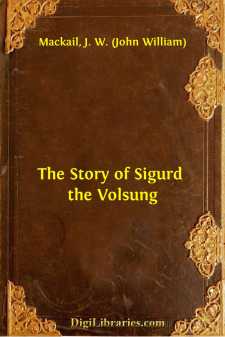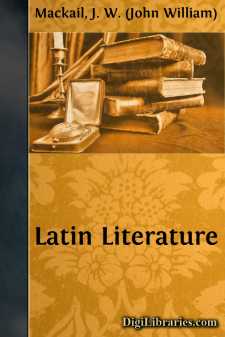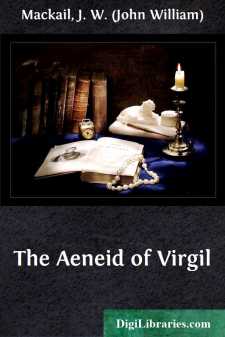Categories
- Antiques & Collectibles 13
- Architecture 36
- Art 48
- Bibles 22
- Biography & Autobiography 813
- Body, Mind & Spirit 142
- Business & Economics 28
- Children's Books 15
- Children's Fiction 12
- Computers 4
- Cooking 94
- Crafts & Hobbies 4
- Drama 346
- Education 46
- Family & Relationships 57
- Fiction 11828
- Games 19
- Gardening 17
- Health & Fitness 34
- History 1377
- House & Home 1
- Humor 147
- Juvenile Fiction 1873
- Juvenile Nonfiction 202
- Language Arts & Disciplines 88
- Law 16
- Literary Collections 686
- Literary Criticism 179
- Mathematics 13
- Medical 41
- Music 40
- Nature 179
- Non-Classifiable 1768
- Performing Arts 7
- Periodicals 1453
- Philosophy 64
- Photography 2
- Poetry 896
- Political Science 203
- Psychology 42
- Reference 154
- Religion 513
- Science 126
- Self-Help 84
- Social Science 81
- Sports & Recreation 34
- Study Aids 3
- Technology & Engineering 59
- Transportation 23
- Travel 463
- True Crime 29
The Story of Sigurd the Volsung
Description:
Excerpt
BIOGRAPHICAL INTRODUCTION
By J. W. Mackail
William Morris, one of the most eminent imaginative writers of the Victorian age, differs from most other poets and men of letters in two ways—first, he did great work in many other things as well as in literature; secondly, he had beliefs of his own about the meaning and conduct of life, about all that men think and do and make, very different from those of ordinary people, and he carried out these views in his writings as well as in all the other work he did throughout his life.
He was born in 1834. His father, a member of a business firm in the City of London, was a wealthy man and lived in Essex, in a country house with large gardens and fields belonging to it, on the edge of Epping Forest. Until the age of thirteen Morris was at home among a large family of brothers and sisters. He delighted in the country life and especially in the Forest, which is one of the most romantic parts of England, and which he made the scene of many real and imaginary adventures. From fourteen to eighteen he was at school at Marlborough among the Wiltshire downs, in a country full of beauty and history, and close to another of the ancient forests of England, that of Savernake. He proceeded from school to Exeter College, Oxford, where he soon formed a close friendship with a remarkable set of young men of his own age; chief among these, and Morris's closest friend for the rest of his life, was Edward Burne-Jones, the painter. Study of the works of John Ruskin confirmed them in the admiration which they already felt for the life and art of the Middle Ages. In the summer vacation of 1855 the two friends went to Northern France to see the beautiful towns and splendid churches with which that country had been filled between the eleventh and the fifteenth centuries; and there they made up their minds that they cared for art more than for anything else, such as wealth or ease or the opinion of the world, and that as soon as they left Oxford they would become artists. By art they meant the making of beauty for the adornment and enrichment of human life, and as artists they meant to strive against all that was ugly or mean or untruthful in the life of their own time.
Art, as they understood it, is one single thing covering the whole of life but practised in many special forms that differ one from another. Among these many forms of art there are two of principal importance. One of the two is the art which is concerned with the making and adorning of the houses in which men and women live; that is to say, architecture, with all its attendant arts of decoration, including sculpture, painting, the designing and ornamenting of metal, wood and glass, carpets, paper-hangings, woven, dyed and embroidered cloths of all kinds, and all the furniture which a house may have for use or pleasure. The other is the art which is concerned with the making and adorning of stories in prose and verse. Both of these kinds of art were practised by Morris throughout his life. The former was his principal occupation; he made his living by it, and built up in it a business which alone made him famous, and which has had a great influence towards bringing more beauty into daily domestic life in England and in other countries also. His profession was thus that of a manufacturer, designer, and decorator. When he had to describe himself by a single word, he called himself a designer. But it is the latter branch of his art which principally concerns us now, the art of a maker and adorner of stories. He became famous in this kind of art also, both in prose and verse, as a romance-writer and a poet. But he spoke of it as play rather than work, and although he spent much time and great pains on it, he regarded it as relaxation from the harder and more constant work of his life, which was carrying on the business of designing, painting, weaving, dyeing, printing and other occupations of that kind. In later life he also gave much of his time to political and social work, with the object of bringing back mankind into a path from which they had strayed since the end of the Middle Ages, and creating a state of society in which art, by the people and for the people, a joy to the maker and the user, might be naturally, easily, and universally produced.
Even as a boy Morris had been noted for his love of reading and inventing tales; but he did not begin to write any until he had been for a couple of years at Oxford. His earliest poems and his earliest written prose tales belong to the same year, 1855, in which he determined to make art his profession....




